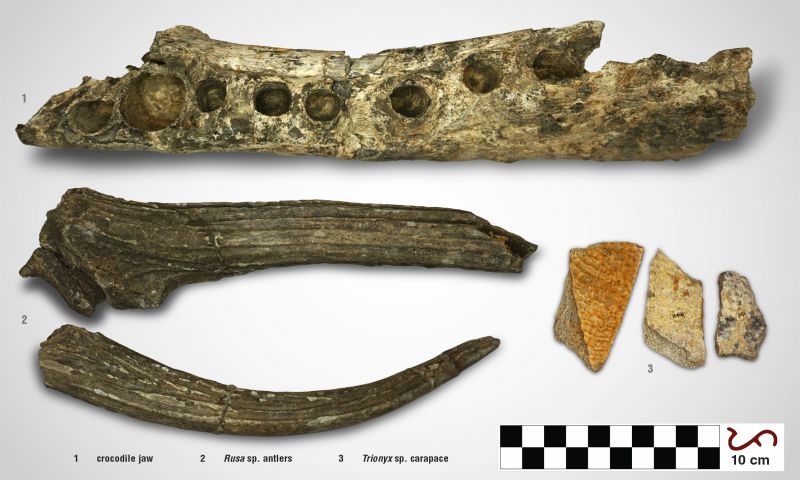Extant Megafauna Fossils

These fossils are from large animal species that still exist in present day Philippines or in some other parts of the world. Some of them now are on the brink of extinction despite surviving the toughest extinction events of the geologic past.
Trionyx sp. (softshell turtle) carapace: Small pieces of the carapace or the hard upper shell of a softshell turtle were collected by the NMP-GPD together with geologists from Iowa State University-USA in Solana, Cagayan in 1978. Softshell turtles are a type of turtle with scales-free carapaces. Such kind of shells enable the turtle to move more freely and easily whether on land or water. These turtles can be found today in freshwater and brackish water areas of Africa but most examples of the genus Trionyx are known only through their fossil record
Rusa sp. (deer) antlers: Fragments of antlers possibly belonging to a small Rusa sp. were found in Cagayan Valley. The genus Rusa is a type of deer typically found in southern Asia. Antlers are extension of the skull. Generally, only the male deer grow antlers. Compared to horns, antlers are true bones and are not covered by keratin. In the Philippines, known examples of deers are the Visayan spotted deer (Rusa alfredi) and the Philippine brown deer (Rusa marianna), both of which are classified by the IUCN under the endangered and vulnerable species respectively.
Crocodile Jaw: The fragment of a bone with distinct holes in it was collected in 1974 by former NMP Director Alfredo Evangelista in Rizal province. The fragment was then identified as crocodile jaw. Other areas in the country with reported crocodile fossils are the provinces of Kalinga and Cagayan. Crocodiles are semiaquatic reptiles and, compared with alligators, have narrow and longer heads and a V-shaped snout.
inquiry@nationalmuseum.gov.ph
(+632) 8298-1100
